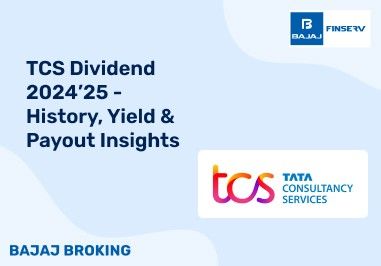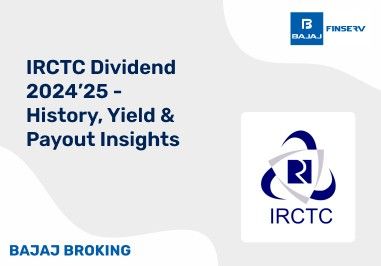Investing in stocks is a psychological game and it can challenge your mental strength quite a lot. A lot depends on whether you approach the market with an optimistic attitude or with a pessimistic one. Generally, people tend to incline more to one side; however, this is not that simple. Each has its own advantages and disadvantages and suits some while not so for others. Of course, all of this is deep inside a person's mentality.
These different mindsets are what affect how people make investments and also the way the market is affected by these investors. Optimists push the market up in terms of buying more stocks and other assets, but pessimists can bring it down with their careful and negative strategies. These need to be understood in seeing how emotions affect the stock market.
What is an Optimist in the Stock Market?
Optimists in the share market seem to foresee the future, as they tend to believe in the fact that markets do grow and are prosperous over time. Positive mindset directs them to invest due to greater stock prices expectations despite momentary losses or economic downtrends. That is primarily based on trends like improvement in technology as well as economic growth or revivals of the markets from troughs.
Optimists typically pick high-growth industries, which, of course, can be some new technology, renewable sources of energy, or emerging countries. They might invest into innovative companies or businesses with considerable long-term prospects. In this way, they turn the dips in the market as a buying opportunity since, after all, they hold onto the hope of recovery and growth. Although this may be very profitable in the bullish cycles, it does demand an enormous risk tolerance because over-optimism may result in overly priced investments.
India's Sensex and Nifty recently hit all-time highs of 79,671.58 and 24,174.00 points, in June this year.
|
For example, during a bull run in the Indian stock market, optimists will aggressively invest in promising stocks as they feel that the trend will continue. Aggressive investment leads to market growth, but one should do this with caution so that he or she does not get overexposed to market risks. Now that we have seen what is optimist, let’s move on to pessimism.
What is Pessimist in the Stock Market?
Pessimists are risk-averse and cautious while trading in the stock market. Such investors are more concerned about protecting their capital and loss rather than trying to earn excess returns. Pessimists also tend to believe that stocks would decline, especially during periods of uncertainty or volatility, and position themselves to protect the fall.
Such investors normally tend to opt for safe havens like bonds, gold, or dividend paying equities because they have a relatively safe perception when the market is in its turbulent times. They would also employ hedging tactics like short selling or investments in inverse ETFs. It may limit returns during a bull run but saves a loss during a bear market.
In November this year, Sensex dropped by 1400 points - a major decline.
|
In turn, when the economic or political states become unstable, negative-minded people would withdraw their exposure in equities and keep in safe haven assets. Thus this strategy ensures investment but has a drawback of losing one's opportunity if the market revives suddenly. The strategy of risk aversion reveals that the investor should adopt his or her investment as per market conditions and their risk level. Now that we know what is pessimist, let’s move on to the key differences between optimist and pessimist.
What are the Key Differences Between Optimist and Pessimist?
Optimists and pessimists are different not only in attitude but also in connection with market patterns and risks.
Here's a comparison: While the optimist is concerned with growth and opportunity, convinced that the market has tremendous long-term potential, the pessimist concerns himself with loss minimization; that is, with risk aversion. So, different attitudes shape the investment strategies, asset choice, and response to the news or events in a market.
Aspect
| Optimist
| Pessimist
|
Outlook
| Positive; anticipates growth
| Negative;anticipates decline
|
Investment Style
| Aggressive; invests in growth stocks
| Defensive; prefers bonds and safe assets
|
Response to Volatility
| Sees volatility as an opportunity
| Views volatility as a risk
|
Market Behaviour
| Buys during dips, expecting recovery
| Sells during dips, expecting further loss
|
Preferred Market Phase
| Bull markets
| Bear markets
|
Choosing Between Optimist and Pessimist
Neither stock market rewards one mindset above the other, but rewards investors who are flexible and can adapt to the strategies according to prevailing conditions. It would be subject to such factors as the risk profile of an individual, goals of an investor, or his knowledge about the general trends in the market.
On one side, a bull may turn out successful by investing in growth-oriented opportunities, but for the bear, outperforming under the bearish situation could happen by focusing on risk mitigation and defensive assets. Nonetheless, neither of these bears all flaws. Too much optimism may lead a bull into overvalued market investment, and overly pessimistic bears might find it challenging to find and realize some growth opportunities.
Using some caution with optimism, at times, will serve a balance within investments. For instance, during an upswing within the market, investment may be steered towards a growth approach while risk management is deployed during the downturn; this encompasses diversifying portfolios as well as the use of stop-loss orders. In the long term, a hybrid will allow investors to derive more benefits from the opportunity in a given market yet keep risks under check for sustainable growth within investments.
Conclusion
Both optimists and pessimists play important roles in the ecosystem that is the stock market, where on one side comes growth and innovation and on the other, caution and prevention of risk. Thus if balanced according to trends either in the market or through individual objectives, making proper investments in the stock markets can be done with plenty of confidence.













